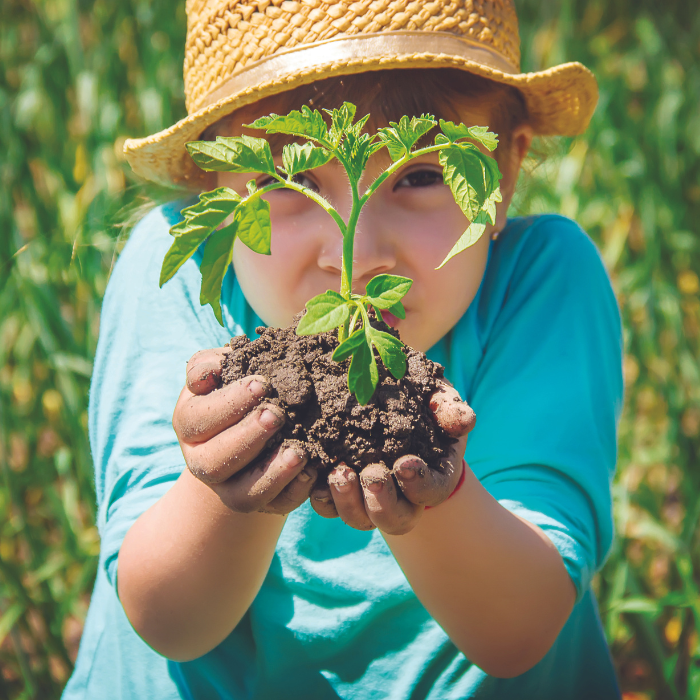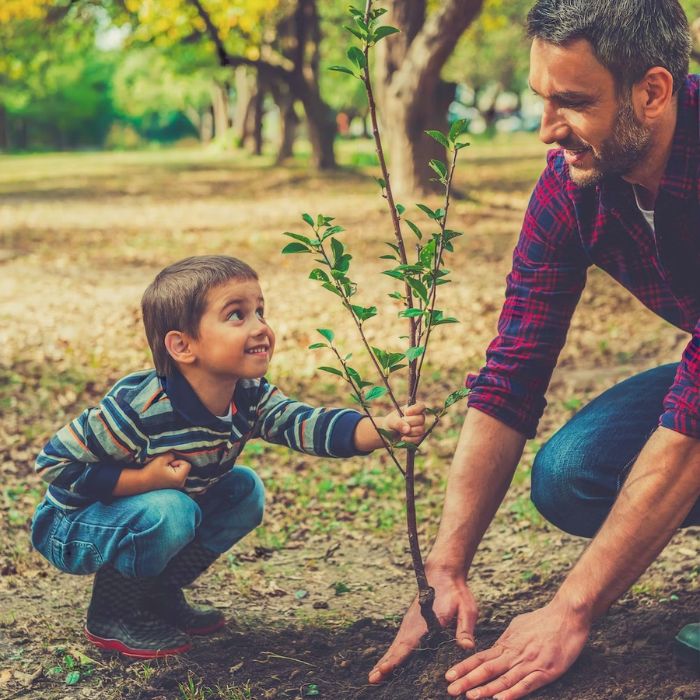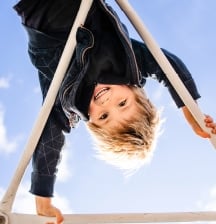
Help your child uncover and appreciate the small things in their natural environment, taking pleasure in the hidden treasures to be found.
Do you remember wanting to stay small forever? What was important to you about your childhood? Perhaps it was a special person, or a sense of time and place? Maybe you like to remember how you related to the world, being happy and carefree playing with sticks and stones, or experiencing the magic of finding a fragile butterfly’s wing.
Children are drawn to the microcosmic elements of the natural world and for obvious reasons. Firstly, they are small to begin with and nature operates at their level, not just at adult height. Remember, children are expected to relate primarily to adult physical surroundings. The furniture is all so big. Cars are colossal. Dinner plates are huge! Have you ever thought about how big a dinner plate would be if it were the same size for you as it is for a 3-year-old?
Secondly, and conveniently for children, not everything in nature is adult-sized. There is a great scale of difference in size and availability between the microcosm of a rock pool and the macrocosm of the vast ocean. (Microcosm means a little world or a world in miniature, whereas macrocosm refers to the world or universe.)
Seeds, flowers, pebbles and the shrimp in a rock pool are all perfectly sized for children to observe and relate to. John Muir, a dedicated wilderness educator, explorer and writer, once wrote: “When we try to pick out anything by itself, we find it hitched to everything else in the universe.” By spending time in nature relating to the ‘small world’, we facilitate an appreciation and respect for the interrelatedness of
all things.
Making nature time with your children a priority in your daily schedule is definitely the first step along the path of environmental awareness. However, there is also a part of the cognitive process that happens naturally, as explained by William James, one of the early giants of modern psychology. His theory is that human attention comes in two different forms.
The first is directed attention. We use this to enable us to focus on demanding tasks like driving, reading a book and writing.
The second form is involuntary attention, which doesn’t require any mental effort at all. Strange objects, moving things, small intricate patterns, wild animals, bright things and tiny pretty things all attract our attention involuntarily. In this way, they demand very little from us. These experiences influence us on all levels: mental, physical, spiritual and emotional; and as David Attenborough says, “No one will protect what they don’t care about and no one will care about what they have never experienced.”
Most children slip easily into the ‘small world’ while out and about in nature. They do not necessarily need to go for a long hike or have a predetermined outcome to enjoy the benefits of nature encounters. Nature does not come with a manual, rather with an infinite set of possibilities. This allows children to play in far more varied and imaginative ways. Compared with man-made playgrounds, natural environments are untidy, dirty even, dynamic, highly complex and there are lots of places to hide. So to a certain degree, we must let children go forth and explore by themselves, seeking out the things in nature that delight them in order to develop vital connections between the outside world and what educationalists call children’s ‘interior hidden affective world’.
No one will protect what they don’t care about and no one will care about what they have never experienced.
handson play
Here are some activities that form a bridge between allowing involuntary attention (ie, children simply ‘playing’ in nature) and directed attention (ie, thinking about how play can relate to environmental and social awareness).
You don’t necessarily have to talk about what happens or what you are experiencing. Children will make connections themselves as their awareness grows.
‘small is beautiful’ display space
Create a special place for your child to keep all the little seedpods, skeleton leaves, beetles wings and other tiny natural objects that they find. This shows your child that their view of the world is meaningful and important to you, and sets a good foundation for communication in later years.
footprints
After it has been raining or frosty, head out to see if you can find animal, bird or insect tracks. Follow them closely at the child’s pace. Where are they going? What do they tell us about the creature?
hidden patterns
While out and about, point out patterns to each other. The way the light shines through punga fronds onto the path, the shadows made by a vine on the rocks near a stream, the effect of autumn on leaves.
listen and feel
Make ‘turning off’ your eyes together into a game. Listen to your surroundings. If you put your hands out, what can you feel? Staying down at the child’s level (ie, crawling or crouching) will make it all the more real and meaningful for the child.
shadows
Look for small shadows made by leaves, sticks, spider’s webs or stones. Place your hand underneath them and trace the shapes with your fingers. If you like, you can do this on a piece of paper. Use natural objects to create shadow ‘plays’. Characters made from sticks, leaves and flowers could walk along a fallen log or climb a tree together, using their shadows to help them hide, appear bigger or camouflage themselves.
lead me
Have your child put a ‘lead’ on you. Now you are going to go where they take you (within reason of course!). You are at their level now and you can comment on what you see from this different perspective. (This one is great for toddlers who need to feel that they have some control.)
mini-beast motels
Create tiny homes for mini-beasts (insects and creepy crawlies) out of leaves, sticks, stones and moss. You can put small pieces of fruit into the motel to attract small creatures to stay a while.
Kristina Jensen is a poet, freelance writer, musician and home school parent living on a boat with her family in the Marlborough Sounds








